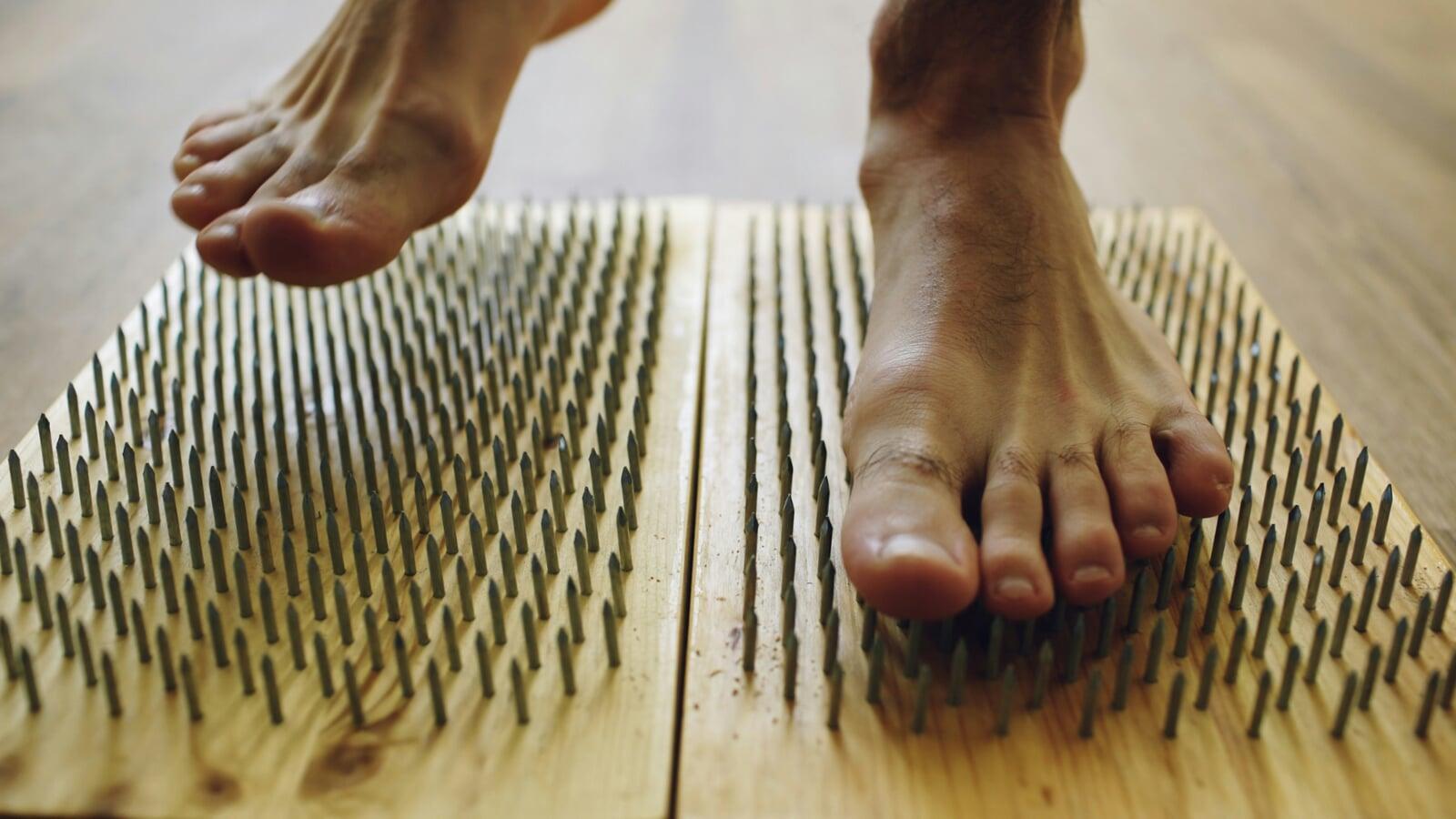Neuropathy
Effective Self-Care Tips to Manage Chemo-Induced Peripheral Neuropathy (CIPN)

Introduction
Chemo-induced peripheral neuropathy is a common side effect where cancer survivors experience lingering numbness, tingling, or pain in their hands and feet after treatment. This page equips you with proven strategies and practical tools to help you manage symptoms, improve how you feel, and make a meaningful difference in your quality of life.
Why It Works
Self-help tools empower cancer survivors by targeting the root mechanisms of chemo-induced peripheral neuropathy—reducing inflammation, boosting circulation, and protecting nerve endings—through consistent, accessible practices like gentle movement and stress reduction. When you combine these with protective routines and sensory retraining, you stimulate nerve repair, ease pain signals, and rebuild daily function in conjunction with your medical treatments. This holistic control turns persistent discomfort into manageable recovery, giving you measurable relief on your own terms.
* Consult your physician before starting any of the self-help programs on this website, as the content is for informational purposes only and not a substitute for professional medical advice from your doctor and healthcare team.
Step 1: Define Your Objectives
Set goals for improving your neuropathy.

Goal Setting
Strategic Goals support cancer survivors in improving physical health and mental well-being through long-term planning. For additional details, read more.
SMART Goals enable survivors to define actionable, measurable objectives, turning broad recovery goals into steps that promote physical, emotional, and social progress. For additional details, read more.
Daily, Weekly, & Monthly Goals offer people in cancer recovery small, actionable tasks to boost consistency and motivation. For additional details, read more.
Tracking & Monitoring
Tracking Progress involves regularly monitoring and recording of tasks, priorities, and goals, enhancing self-awareness and informed decision-making. For additional details, read more.
Tracking Apps help cancer survivors monitor side effects, medications, and mood, simplifying health management, enhancing self-advocacy, and supporting personalized care. For additional details, read more.
Step 2: Assess Current Situation
Conduct self-assessments regarding your cancer recovery.

Assessment
Self-Assessment enhances self-awareness, enabling individuals to recognize patterns in symptoms, energy levels, and emotional states, which supports tailored recovery strategies. For additional details, read more.
Perceived Stress assessment evaluates how much stress cancer survivors feel, using tools like the Perceived Stress Scale (PSS-10) to measure perceptions of life’s unpredictability and anxiety. For additional details, read more.
Values Assessment promotes self-awareness and value-driven goals, which are crucial for cancer survivors navigating physical, emotional, and existential challenges. For additional details, read more.
Step 3: Stabilize Your Body
Establish routines to settle and calm your nervous system.

Sleep Management
Sleep Schedule aligns bedtimes and wake times with circadian rhythm, which supports restful sleep and daytime energy. For additional details, read more.
Individuals recovering from cancer use a Pre-Sleep Routine to promote faster sleep onset and deeper sleep. For additional details, read more.
A Sleep Environment designed for relaxation helps cancer survivors enhance sleep quality and well-being by minimizing disruptions. For additional details, read more.
Sleep Therapies
Individuals recovering from cancer use CBT-I to modify thoughts and behaviors, fostering healthier sleep habits and reducing insomnia. For additional details, read more.
Eating & Drinking
Hydration*
Placeholder - You can edit text on your website by double clicking on a text box on your website. Alternatively, when you select a text box a settings menu will appear.
Balanced Diet*
Placeholder - You can edit text on your website by double clicking on a text box on your website. Alternatively, when you select a text box a settings menu will appear.
Limit Alcohol Consumption*
Placeholder - You can edit text on your website by double clicking on a text box on your website. Alternatively, when you select a text box a settings menu will appear.
Step 4: Rebuild Physical Foundation
Focus on physcial functions to regain movement, sensation, and neuroplasticity.

Physical Activities & Exercise
Balance exercises enhance stability and confidence in daily mobility, reducing fall risk. For additional details, read more.
Individuals recovering from cancer use stretching to improve range of motion and flexibility, fostering mobility and easing muscle tension. For additional details, read more.
Running*
Placeholder - You can edit text on your website by double clicking on a text box on your website. Alternatively, when you select a text box a settings menu will appear.
Biking*
Placeholder - You can edit text on your website by double clicking on a text box on your website. Alternatively, when you select a text box a settings menu will appear.
Strength Training*
Placeholder - You can edit text on your website by double clicking on a text box on your website. Alternatively, when you select a text box a settings menu will appear.
Circuit Training*
Placeholder - You can edit text on your website by double clicking on a text box on your website. Alternatively, when you select a text box a settings menu will appear.
Recovery & Rest Process*
Placeholder - You can edit text on your website by double clicking on a text box on your website. Alternatively, when you select a text box a settings menu will appear.
Energy Conservation
Energy Audits reveal how social interactions, alongside other activities, affect energy levels, enabling cancer survivors to optimize their routines for better physical and emotional health. For additional details, read more.
Sensory Awareness
The 5-4-3-2-1 Grounding technique helps cancer survivors reduce stress by focusing on sensory experiences and the present moment. For additional details, read more.
Individuals recovering from cancer use Progressive Muscle Relaxation to relieve stress and improve relaxation through muscle tensing and releasing. For additional details, read more.
People in cancer recovery practice Body Scan Meditation to foster present-moment awareness and improve body-mind connection. For additional details, read more.
Step 5: Reframe Your Mind
Shift your perceptions and build resilience.

Cognitive Reframing
Survivors use CBT to modify negative thoughts, fostering coping skills and emotional health in recovery. For additional details, read more.
Acceptance and Commitment Therapy helps people in recovery accept tough emotions and align actions with values, boosting well-being. For additional details, read more.
Self-Compassion
Survivors practice Self-Kindness to foster a gentle, supportive attitude toward themselves during moments of struggle, failure, or self-criticism. For additional details, read more.
Journaling
Gratitude Journaling helps cancer survivors foster positivity and resilience by writing down things they’re thankful for. For additional details, read more.
Bullet Journal helps individuals organize tasks, track health, and monitor goals, reducing stress and fostering control during cancer recovery. For additional details, read more.
Step 6: Sustain Your Effort
Consistency is the key to long-term results.

Personal Productivity
Task Lists aid cancer survivors in organizing daily tasks and goals, offering structure and supporting recovery milestones. For additional details, read more.
Calendars help people in recovery schedule medical and self-care tasks, enhancing time management balance and reducing stress. For additional details, read more.
The Daily Startup Checklist streamlines morning priorities for cancer survivors, minimizing fatigue and setting a positive tone for the day. For additional details, read more.
The 80/20 Rule enables survivors to identify and focus on the vital few actions that yield 80% of results from 20% of the effort. For additional details, read more.
People in cancer recovery rely on Tactical Action Plans to link long-term goals with actionable daily tasks. For additional details, read more.
Social Support & Connection
Individuals recovering from cancer Build a Support Team to share burdens, reduce isolation, and gain encouragement. For additional details, read more.
Joining a Support Group*
Placeholder - You can edit text on your website by double clicking on a text box on your website. Alternatively, when you select a text box a settings menu will appear.
Step 7: Reduce Stress
Make self-care a priority.

Breathing Techniques
Diaphragmatic Breathing helps cancer survivors reduce stress and promote relaxation through deep, rhythmic breathing. For additional details, read more.
People in cancer recovery use Pursed Lip Breathing to enhance oxygen flow and promote calm. For additional details, read more.
The 5-4-3-2-1 Grounding technique helps cancer survivors reduce stress by focusing on sensory experiences and the present moment. For additional details, read more.
Guided Imagery
Visualization of Nature helps cancer survivors relax and boost mood through vivid mental imagery of serene outdoor scenes. For additional details, read more.
Safe Place Imagery uses the brain’s ability to simulate sensory experiences to enhance relaxation. For additional details, read more.
Survivors use Journey Visualization to reduce stress and spark self-discovery by evoking vivid, dynamic movement through a mental landscape. For additional details, read more.
Positive Psychology
People in cancer recovery Culivate Positive Thinking to enhance emotional health and reduce stress through optimism. For additional details, read more.
A Growth Mindset helps cancer survivors view setbacks as growth opportunities, fostering adaptability and recovery. For additional details, read more.
Survivors use Emotional Intelligence to manage emotions and strengthen connections. For additional details, read more.
Role and Identity Transformation helps cancer survivors reshape their sense of self and their roles during recovery. For additional details, read more.
Individuals recovering from cancer Build a Support Team to share burdens, reduce isolation, and gain encouragement. For additional details, read more.

